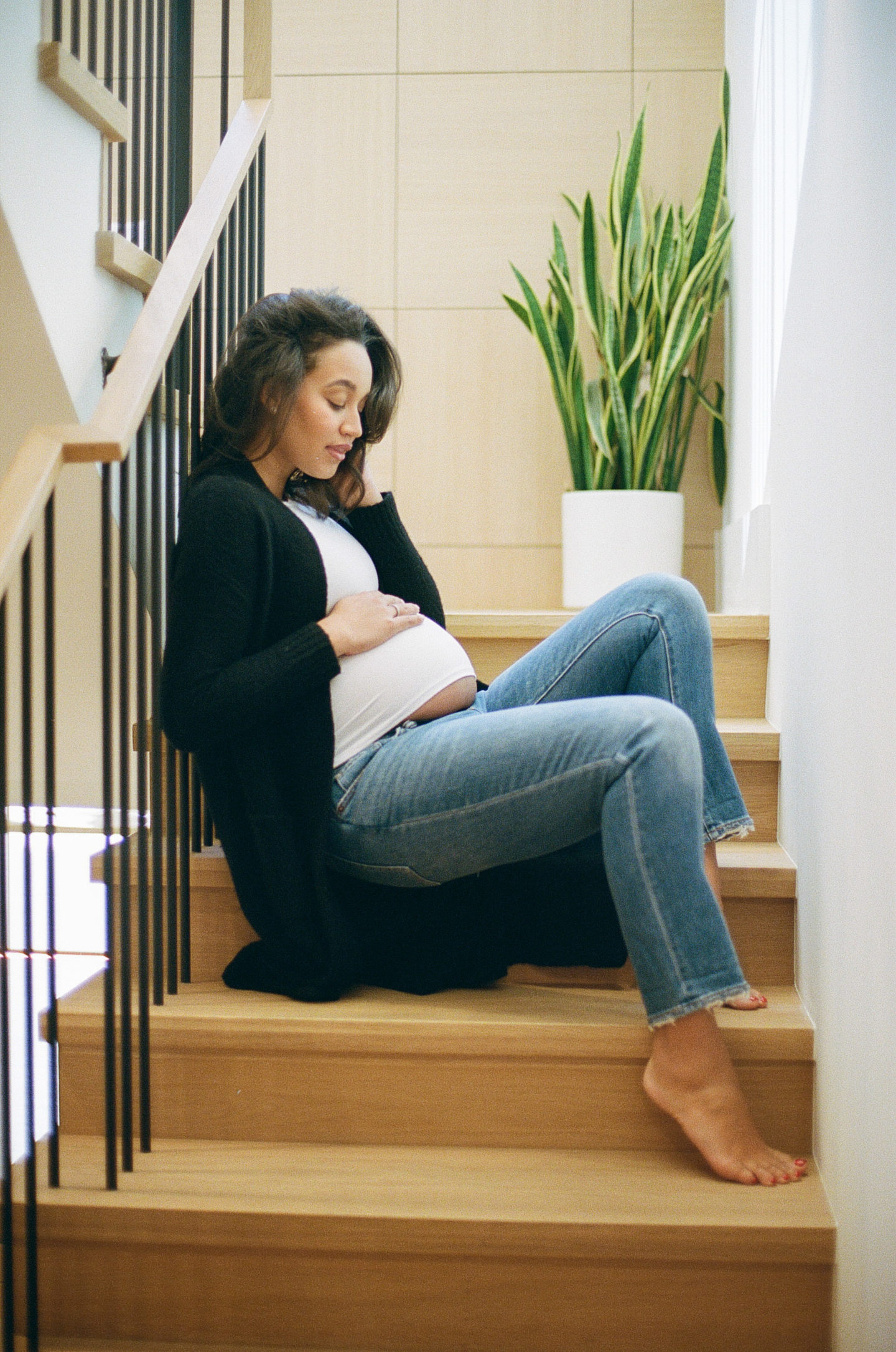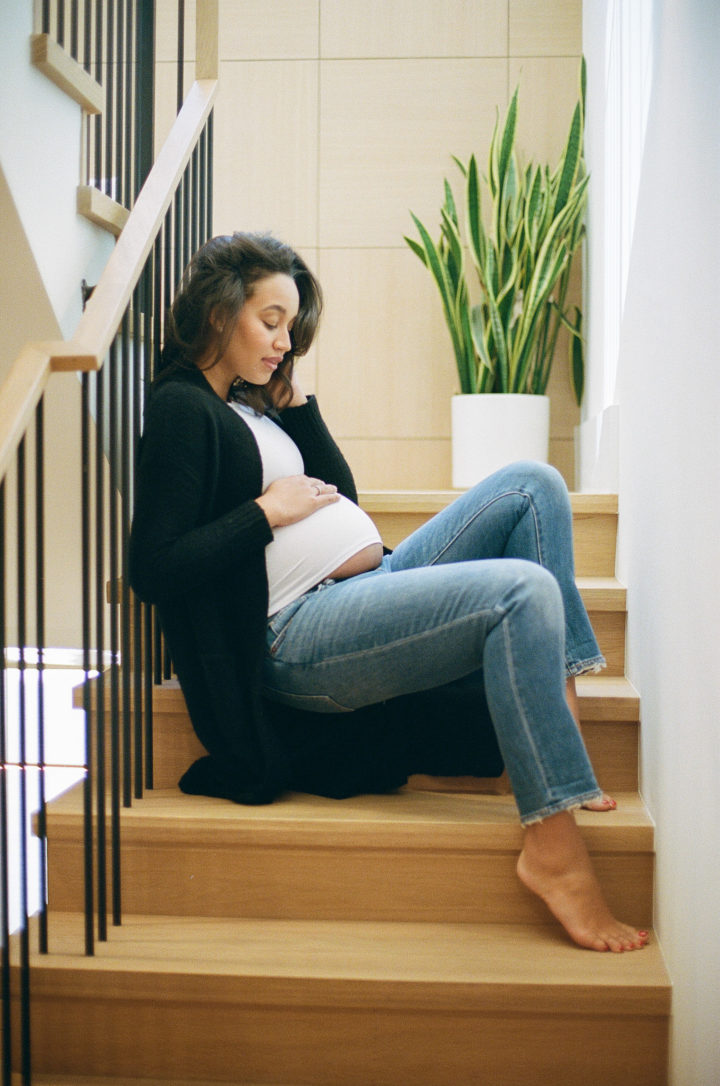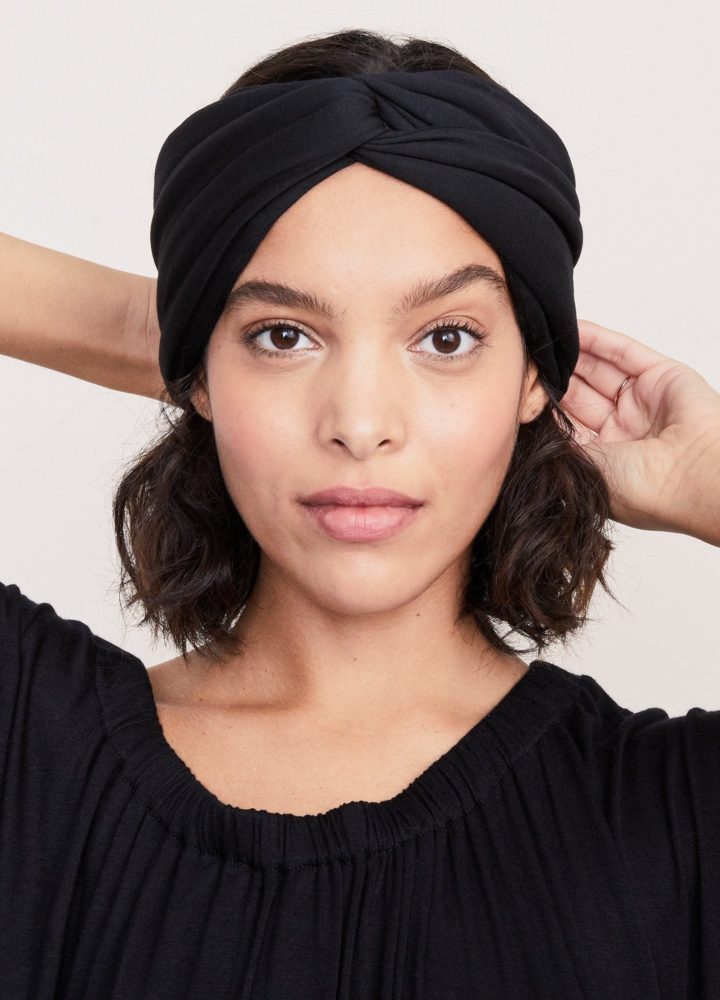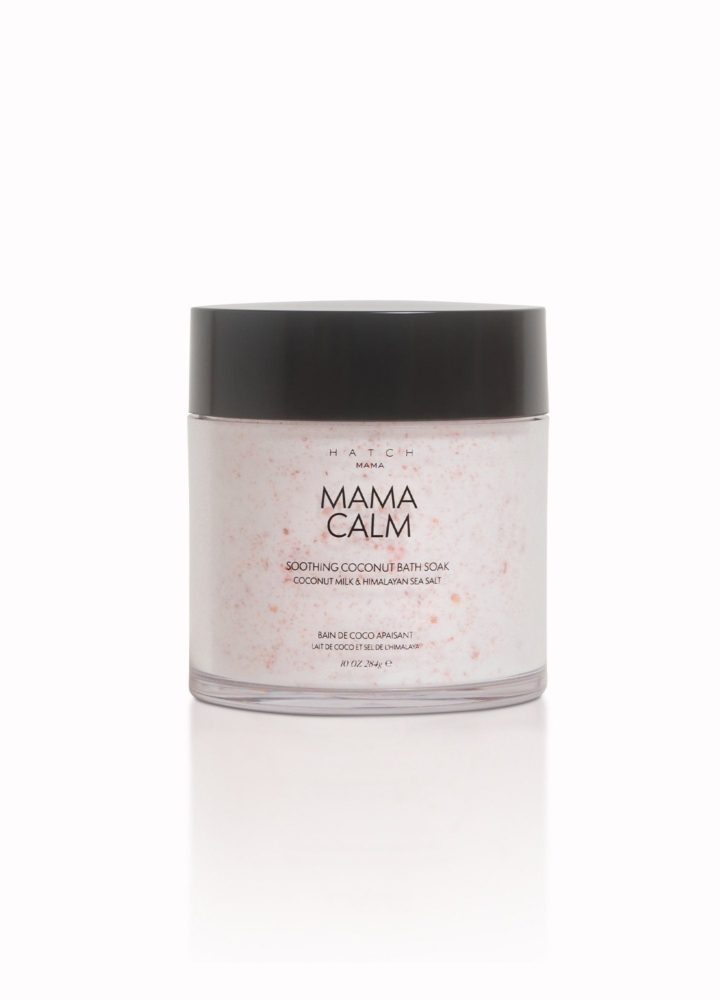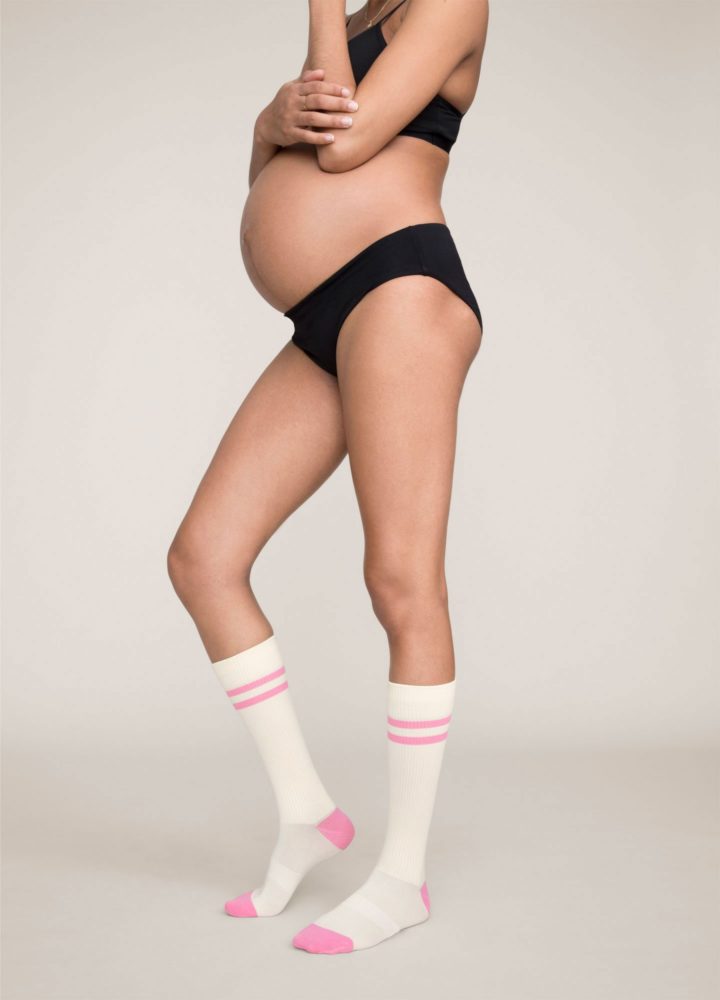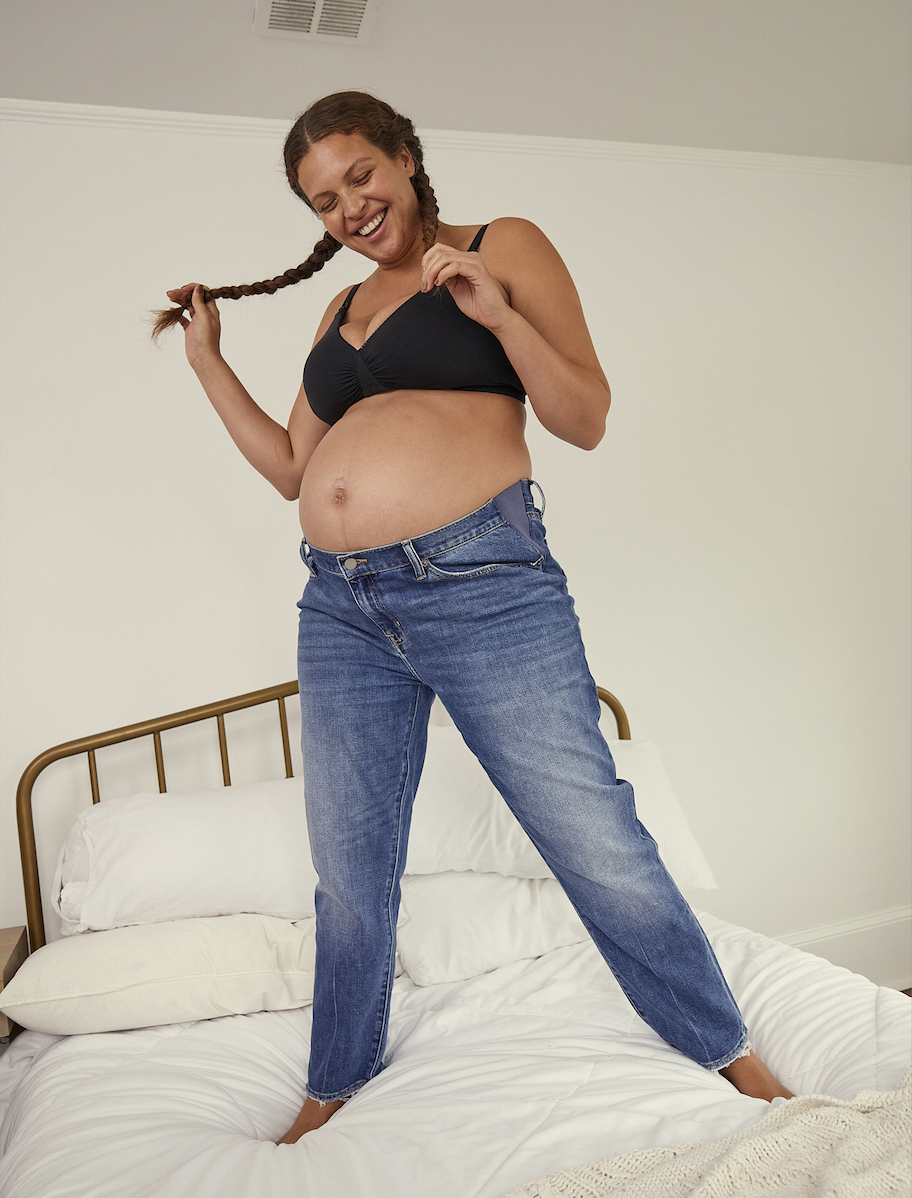A sore back, leg cramps, bizarre cravings, and appetite changes — pregnancy is full of crazy unexpected symptoms; it’s just part of becoming a new mom! But one thing you might not have had on your pregnancy Bingo sheet was a changing shoe size. It sounds totally unrelated to the growing nugget in your belly, but having your feet grow during pregnancy (and having to go up a shoe size as a result) is actually a fairly common experience.
Keep reading for all of your questions about your growing feet and other pregnancy symptoms answered below.
Why Do Your Feet Grow During Pregnancy?
There are a few different reasons your feet will grow during pregnancy, but the short answer is that it’s all thanks to our good friend, relaxin. Relaxin is a hormone produced during pregnancy to help loosen and relax the ligaments and joints in your pelvis, which is necessary for your baby to pass through the birth canal. But relaxin can affect other ligaments and joints in your body, including in your feet.
This not only can make your joints more flexible, but it can also lead to an increase in foot size. And it gets even more interesting than that: the hormone relaxin can also change the SHAPE of your feet, too.
During pregnancy, your feet might become wider and flatter, thanks to both loosened ligaments and the extra weight you’ll soon be carrying around (hello, watermelon tummy and maternity-size dresses).
It’s also common for pregnant women to notice their arch height decrease, leading to flat feet. Supportive shoes (including those with special insoles) can help accommodate changes in foot structure. For orthotics or other foot-growth-related advice, a podiatrist can be your best friend.
Relaxin isn’t the only cause for your new shoe size. During pregnancy, your body retains more water and has a higher blood volume. All that extra fluid tends to pool in the lower third of your body, which can lead to swollen feet and ankles. So say goodbye to your favorite pair of strappy high heels — chances are they’ll be a no-go for the next nine months.
How Long Will These Changes Last?
If you’re stressed about losing an entire closet of carefully curated footwear, don’t be. Your feet won’t stay that size forever. After you give birth, your body will stop producing relaxin, and your feet will gradually return to their pre-pregnancy size. But don’t push poorly fitting shoes until they definitely fit. Squeezing into shoes that are too small or don’t have enough arch support can lead to other problems down the road.
How To Ease Swollen Feet and Other Foot Problems During Pregnancy
Going up a shoe size is all fine and good, but swollen ankles and sore feet can quickly become a nuisance when you have to deal with them all day long for nine months straight. Luckily, there are several solutions that may ease your foot pain and get you back to feeling like your best self.
Go for a Walk (if Possible)
Generally, one of the best things you can do to ease swollen feet and other foot ailments during pregnancy is to stay active. Exercise can help improve circulation, which reduces swelling and relieves associated foot pain.
And there’s no need to hit your local CrossFit studio to get these benefits — walking, swimming laps, and even doing a prenatal yoga workout from the comfort of your basement are all great forms of pregnancy-safe exercise. (We do recommend talking to your doctor before beginning a new exercise regimen, however.)
Elevate Your Feet
Another way you can help soothe your swollen or sore feet is by practicing some self-care when you’re at home. Try elevating your feet as much as possible when you’re lying down or sitting.
Elevating the legs can improve circulation and get the blood flowing away from your feet and ankles. You can use a footrest, stack of pillows, or a recliner chair to elevate your feet for the best results. Then, pull out your favorite book or scroll through new pregnancy styles on IG — it’s self-care time.
Take a Bath
You might try soaking your feet in warm water or a relaxing bath soak to help relieve foot pain. This has the added benefit of both easing your pain and helping you to unwind and let go of some of the stresses of pregnancy. Being preggo can be a stressful time, and anything you can do to relax a little bit is 100% worth it.
Try a Foot Massage
Speaking of relaxation, try a foot massage. You can use a gentle foot massager or even your own fingers to improve circulation, reduce swelling, and relax the tense muscles in your ankles and feet. (For bonus points, ask your partner to do it instead.) Pay special attention to your arch for the best results, and of course, be sure to get the all-clear from your Ob/Gyn before getting a foot massage.
In cases of persistent ouchies, your doctor might recommend other treatments, such as wearing compression socks, taking over-the-counter pain medication, or using a swell relief balm. Whichever treatment options you choose, the point is that you have options. You’re not alone, and your feet deserve the love.
Other Pregnancy Aches and Pains
Aching feet aren’t the only frustrating or bothersome symptom you’ll likely experience. One of the most common aches and pains during pregnancy is back pain. This can be caused by the weight of your growing uterus, which puts extra strain on your back muscles. You might experience pain in your hips and pelvis, also thanks to the growing weight of your pelvis.
Headaches are also common during pregnancy, thanks to changing hormone levels (calling on you, cooling headache relief wrap). Or, you might experience muscle cramps in your legs caused by extra weight and pressure on your veins, which causes them to become compressed. Other common pregnancy symptoms include heartburn, indigestion, or constipation, which can cause stomach pain and discomfort.
All of these aches and pains can be frustrating, and they might feel overwhelming at times. It’s important to remember that nine times out of ten, they’re totally typical pregnancy symptoms, and there are steps you can take to alleviate your discomfort.
If you’re ever worried about a pregnancy symptom, you can always talk to your Ob/Gyn or another healthcare provider for advice. Don’t suffer in silence: You deserve to feel your best during this magical (and sometimes not magical at all) time.
Changing Clothing Size During Pregnancy
Your shoe size isn’t the only size that will change during pregnancy. Once you reach the second trimester, around 12 weeks in, your bump will start to show. That means one of our favorite parts of pregnancy: maternity clothes!
When you buy maternity clothes is totally up to you. Some women enjoy getting a head start on their maternity clothes shopping and start investing in oversized sweaters and maternity denim as early as the first trimester (guilty!). Others wait as long as possible to upgrade their wardrobe. It completely depends on your individual wants and needs — there’s no right answer.
Figuring out your maternity clothes size is actually very simple. Maternity clothes are based on your pre-pregnancy size, not your current size. So if you wore an 8 before pregnancy, you’ll likely still be an 8 in maternity clothing. (Although it’s not abnormal to go up a size or two during pregnancy, either.)
There’s another size label you have to pay attention to here. Maternity clothing sizes take into account your stage of pregnancy, so pay attention to whether the clothes you’re buying are designed for the trimester you’re vibing in.
Wear a third-trimester pair of jeans during your first 15 weeks of pregnancy, and you’ll likely drown in them. Try and wear your old first-trimester dresses during the last few weeks before baby, and you’re likely to pop a button. But pay attention to those labels, and you’ll likely find they’re juuuust right.
Why Maternity Clothes Are a Must
A last note about maternity clothing: You might be tempted to simply purchase your normal threads in one size up. Our advice? Don’t. Your body changes in more ways than one during pregnancy, and maternity clothes take those proportional changes into account in a way that other clothes don’t.
For instance, if you just get your standard pair of jeans a few sizes up, they might fit okay around your pregnancy tummy, but chances are you’ll be swimming in them around your thighs and calves.
Take a Deep Breath
It’s easy to think about all of the changes happening in your life right now and feel stressed. You’re preparing every aspect of your life for a new baby — who has time to go shoe shopping, much less decorate the nursery and get ready for a baby shower?
But pregnancy is such a special and unique time of life. Try to enjoy this time and all of the changes that come with it, including your changing shoe size. Think of it as a reward you get for the hard work of growing a brand-new human inside you!
Sources:
